- Home
- NEET
Please Login or Sign up to continue!
NEET
NEET - UG or the National Entrance cum Eligibility Test is the main entrance exam for medical courses like MBBS and BDS in the country. The governing body for this exam is the NTA or National Testing Agency and it is in charge of conducting the NEET exam across India. This exam has difficult objective questions from the three subjects of Physics, Chemistry and Biology, and it is taken by an average of 20–25 lakh aspirants every year.
TopperLearning covers the entire NEET syllabus and has study material prepared by subject matter experts. Along with study and revision notes, regular video lectures are also conducted and uploaded on the website for students to learn better.
To be eligible for the NEET exam, students should be a citizen of India/NRI/PIO. The minimum age limit for this exam is 17 years and the maximum age limit is 25 years for the general category. Additionally, students should have cleared their board exams with at least 50% marks and must have had the mandatory subjects of Physics, Chemistry, Biology, English and an elective subject.
TopperLearning is one of India’s leading education portals that provides assistance and study material for major competitive exams like JEE and NEET. We also provide aspirants with a study platform for adequate revision and practice so that they answer each question with precision.
The NEET Syllabus is based on the syllabus decided by the National Medical Commission (NMC). The NEET syllabus includes topics from Physics, Chemistry, Zoology and Botany. It mostly comprises the topics covered in the books of Class 11 and 12 Science. The syllabus for the NEET exam is carefully designed by NMC after going through the books of all state boards and CBSE, NCERT and COBSE.
NEET Preparation Resources
To urge students to evaluate themselves regularly, TopperLearning offers various kinds of tests. These tests can be taken on a weekly basis or incorporated in your daily study schedule to gauge your performance and assess your preparation in the three subjects of Physics, Chemistry and Biology. Based on these tests that you are encouraged to take frequently, you can decide which chapter or even which subject needs more attention. Focus more on the weak topics and revise them more often than you had initially decided. With a meticulous plan and backed by enough study resources, you will surely ace the NEET exam.
Our NEET exam study resources include video lessons, previous years’ question papers and the NEET syllabus. These detailed study resources can help any student give their best at the examination. Our resources are updated regularly, and we ensure that no aspirant is behind in their preparation. Going through our planned study resources will take students a long way. Our webinars allow students to interact with our subject matter experts, and they can raise their questions during these live online sessions. Students can also resolve their doubts in the ‘Ask a Doubt’ section of the TopperLearning website.
NEET Video Lectures By Experts
VIEW ALL-
Use of Proteins in Inactive Form
 This video discusses the use of inactive form of proteins to microorganisms.
This video discusses the use of inactive form of proteins to microorganisms. -
Cloning Vectors- Agrobacterium tumefaciens
 This video explains the characteristics of Agrobacterium tumefaciens which makes it an ideal cloning vector.
This video explains the characteristics of Agrobacterium tumefaciens which makes it an ideal cloning vector. -
Bt Toxin- Significance
 This video explains the effect of Bt toxin on the insects and the bacterium producing the toxin.
This video explains the effect of Bt toxin on the insects and the bacterium producing the toxin. -
Pseudomonas in Pollution Control
 This video describes the role of Pseudomonas bacterium in pollution control.
This video describes the role of Pseudomonas bacterium in pollution control. -
RNA Interference
 This video discusses the significance of RNA interference in infestation of tobacco plants.
This video discusses the significance of RNA interference in infestation of tobacco plants. -
The Living World
 The Living World, Features of Living Beings, Diversity in the Living World
The Living World, Features of Living Beings, Diversity in the Living World -
The Living World
 The Living World, Taxonomic Categories and Taxonomical Aids
The Living World, Taxonomic Categories and Taxonomical Aids -
Kingdom Monera
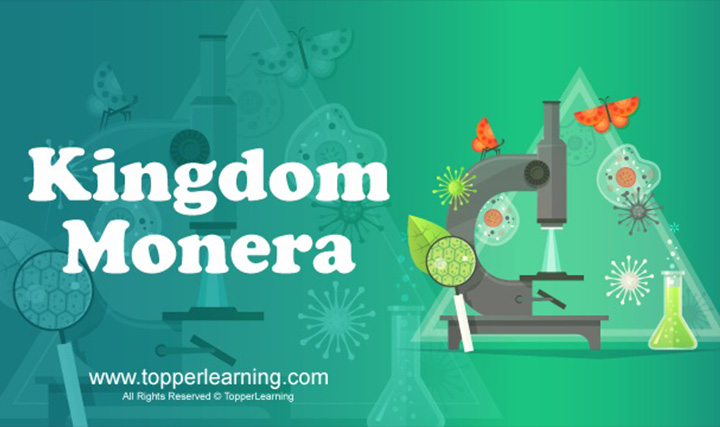
This video explains about Kingdom Monera
-
Kingdom Protista

This video explains about Kingdom Protista
-
Biological Classification
 Biological Classification, Kingdom: Fungi, Plantae, Animalia
Biological Classification, Kingdom: Fungi, Plantae, Animalia -
Biological Classification
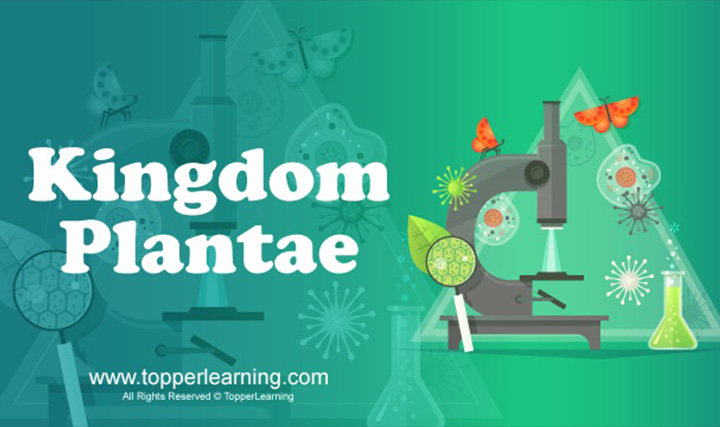 Biological Classification, Kingdom: Fungi, Plantae, Animalia
Biological Classification, Kingdom: Fungi, Plantae, Animalia -
Biological Classification
 Biological Classification, Kingdom: Fungi, Plantae, Animalia
Biological Classification, Kingdom: Fungi, Plantae, Animalia -
Biological Classification
 Biological Classification, Virus, Viroids and Lichens
Biological Classification, Virus, Viroids and Lichens -
Biological Classification
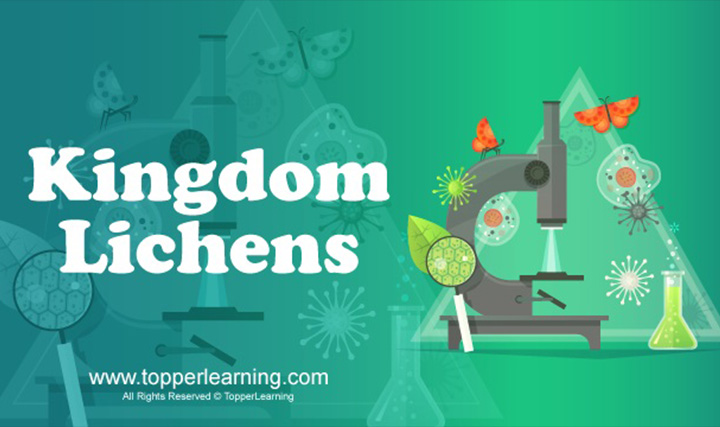 Biological Classification, Virus, Viroids and Lichens
Biological Classification, Virus, Viroids and Lichens -
Plant Kingdom
 Plant Kingdom, Algae
Plant Kingdom, Algae -
Plant Kingdom
 Plant Kingdom, Bryophytes and Pteridophytes
Plant Kingdom, Bryophytes and Pteridophytes -
Plant Kingdom
 Plant Kingdom, Bryophytes and Pteridophytes
Plant Kingdom, Bryophytes and Pteridophytes -
Plant Kingdom
 Plant Kingdom, Gymnosperms and Angiosperms
Plant Kingdom, Gymnosperms and Angiosperms -
Plant Kingdom
 Plant Kingdom, Gymnosperms and Angiosperms
Plant Kingdom, Gymnosperms and Angiosperms -
Plant Kingdom
 Plant Kingdom, Plant Life Cycles
Plant Kingdom, Plant Life Cycles -
Animal Kingdom
 Animal Kingdom, Basis of Classification
Animal Kingdom, Basis of Classification -
Animal Kingdom
 Animal Kingdom, Porifera, Coelenterata, Ctenophora
Animal Kingdom, Porifera, Coelenterata, Ctenophora -
Animal Kingdom
 Animal Kingdom, Porifera, Coelenterata, Ctenophora
Animal Kingdom, Porifera, Coelenterata, Ctenophora -
Animal Kingdom
 Animal Kingdom, Porifera, Coelenterata, Ctenophora
Animal Kingdom, Porifera, Coelenterata, Ctenophora -
Animal Kingdom
 Animal Kingdom, Platyhelminthes, Aschelminthes, Annelida
Animal Kingdom, Platyhelminthes, Aschelminthes, Annelida -
Animal Kingdom
 Animal Kingdom, Platyhelminthes, Aschelminthes, Annelida
Animal Kingdom, Platyhelminthes, Aschelminthes, Annelida -
Animal Kingdom
 Animal Kingdom, Platyhelminthes, Aschelminthes, Annelida
Animal Kingdom, Platyhelminthes, Aschelminthes, Annelida -
Animal Kingdom
 Animal Kingdom, Arthropoda, Mollusca, Echinodermata, Hemichordata
Animal Kingdom, Arthropoda, Mollusca, Echinodermata, Hemichordata -
Animal Kingdom
 Animal Kingdom, Arthropoda, Mollusca, Echinodermata, Hemichordata
Animal Kingdom, Arthropoda, Mollusca, Echinodermata, Hemichordata -
Animal Kingdom
 Animal Kingdom, Arthropoda, Mollusca, Echinodermata, Hemichordata
Animal Kingdom, Arthropoda, Mollusca, Echinodermata, Hemichordata -
Animal Kingdom
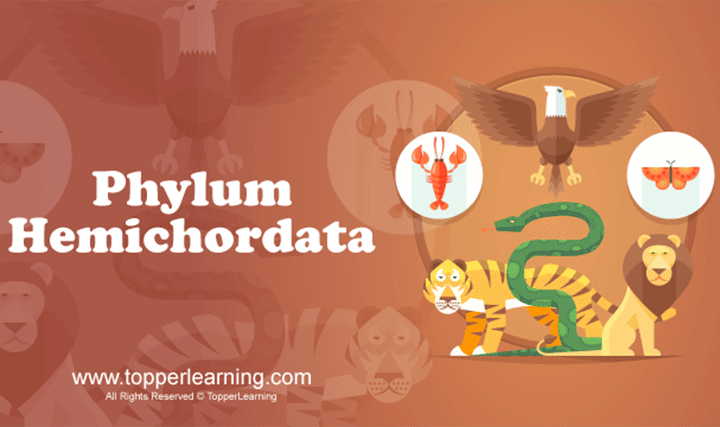 Animal Kingdom, Arthropoda, Mollusca, Echinodermata, Hemichordata
Animal Kingdom, Arthropoda, Mollusca, Echinodermata, Hemichordata -
Animal Kingdom
 Animal Kingdom, Chordata
Animal Kingdom, Chordata -
Animal Kingdom
 Animal Kingdom, Chordata
Animal Kingdom, Chordata -
Animal Kingdom
 Animal Kingdom, Chordata
Animal Kingdom, Chordata -
Animal Kingdom
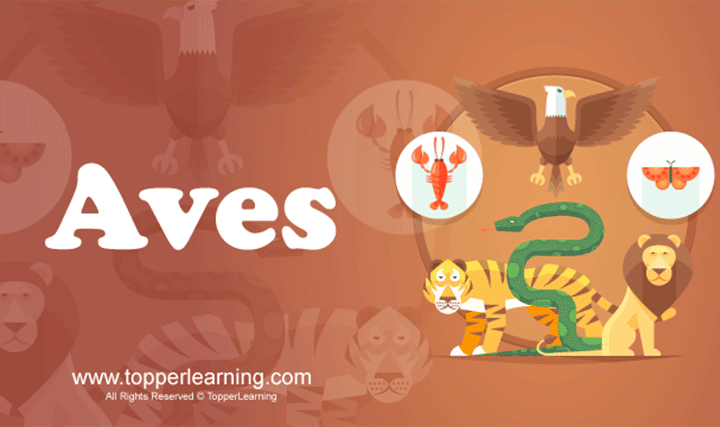 Animal Kingdom, Chordata
Animal Kingdom, Chordata -
Animal Kingdom
 Animal Kingdom, Chordata
Animal Kingdom, Chordata -
Morphology of Flowering Plants
 Morphology of Flowering Plants, The Root
Morphology of Flowering Plants, The Root -
Morphology of Flowering Plants
 Morphology of Flowering Plants, The Root
Morphology of Flowering Plants, The Root -
Modifications of the Root
 This video describes the different modifications of the roots in plants
This video describes the different modifications of the roots in plants -
Morphology of Flowering Plants
 Morphology of Flowering Plants, Stem, Leaf, Inflorescence
Morphology of Flowering Plants, Stem, Leaf, Inflorescence -
Morphology of Flowering Plants

This video explains the types of venation in the leaves of plants
-
Modifications of the Stem
 This video describes the different modifications of the stem in plants
This video describes the different modifications of the stem in plants -
Morphology of Flowering Plants
 Morphology of Flowering Plants, Stem, Leaf, Inflorescence
Morphology of Flowering Plants, Stem, Leaf, Inflorescence -
Modifications of the Leaf
 This video describes the different modifications of the leaves in plants
This video describes the different modifications of the leaves in plants -
Floral Diagram
 This video explains what is a floral diagram, the information provided by the floral diagram and how to draw a floral diagram.
This video explains what is a floral diagram, the information provided by the floral diagram and how to draw a floral diagram. -
Floral Formula
 This video explains what is a floral formula, importance of floral formula, the different symbols in a floral formula and gives examples of few floral formulae.
This video explains what is a floral formula, importance of floral formula, the different symbols in a floral formula and gives examples of few floral formulae. -
Gynoecium and its Types
 This video describes the classification of gynoecium on the basis of fusion - apocarpous and syncarpous and on the basis of number of carpels- monocarpellary, bicarpellary, tricarpellary, multicarpellary.
This video describes the classification of gynoecium on the basis of fusion - apocarpous and syncarpous and on the basis of number of carpels- monocarpellary, bicarpellary, tricarpellary, multicarpellary. -
Cohesion and Adhesion of Stamens
 This video explains the terms cohesion and adhesion of stamens and different conditions of stamens - monadelphous, diadelphous, polyadelphous, epipetalous, episepalous and epiphyllous stamens.
This video explains the terms cohesion and adhesion of stamens and different conditions of stamens - monadelphous, diadelphous, polyadelphous, epipetalous, episepalous and epiphyllous stamens. -
Corolla-Types and Modifications
 This video details the polypetalous and gamopetalous corolla and the different regular and irregular forms of gamopetalous corolla - tubular, infundibuliform, rotate, hypocrateriform, urceolate, bilabiate, personate, ligulate corolla.
This video details the polypetalous and gamopetalous corolla and the different regular and irregular forms of gamopetalous corolla - tubular, infundibuliform, rotate, hypocrateriform, urceolate, bilabiate, personate, ligulate corolla. -
Aestivation
 This video describes aestivation and the types of aestivation - valvate, imbricate, twisted, vexillary.
This video describes aestivation and the types of aestivation - valvate, imbricate, twisted, vexillary. -
Calyx-Types and Modifications
 This video details the polysepalous and gamosepalous calyx and the different modifications of calyx - pappus, spinous, spurred, petaloid and hooded.
This video details the polysepalous and gamosepalous calyx and the different modifications of calyx - pappus, spinous, spurred, petaloid and hooded. -
Root Hair and Trichomes
 This video explains the difference between root hair and trichomes.
This video explains the difference between root hair and trichomes. -
Vascular Bundles in Root and Stem
 This video explains why vascular bundles are radial in roots but conjoint in stems.
This video explains why vascular bundles are radial in roots but conjoint in stems. -
Anatomy of Flowering Plants
 Anatomy of Flowering Plants, Meristematic Tissues and Permanent Tissues
Anatomy of Flowering Plants, Meristematic Tissues and Permanent Tissues -
Anatomy of Flowering Plants
 Anatomy of Flowering Plants, Meristematic Tissues and Permanent Tissues
Anatomy of Flowering Plants, Meristematic Tissues and Permanent Tissues -
Anatomy of Flowering Plants
 Anatomy of Flowering Plants, The Tissue System
Anatomy of Flowering Plants, The Tissue System -
Anatomy of Flowering Plants
 Anatomy of Flowering Plants, The Tissue System
Anatomy of Flowering Plants, The Tissue System -
Anatomy of Flowering Plants
 Anatomy of Flowering Plants, The Tissue System
Anatomy of Flowering Plants, The Tissue System -
Anatomy of Flowering Plants
 Anatomy of Flowering Plants, Anatomy of Dicotyledonous and Monocotyledonous Plants
Anatomy of Flowering Plants, Anatomy of Dicotyledonous and Monocotyledonous Plants -
Anatomy of Flowering Plants
 Anatomy of Flowering Plants, Anatomy of Dicotyledonous and Monocotyledonous Plants
Anatomy of Flowering Plants, Anatomy of Dicotyledonous and Monocotyledonous Plants -
Anatomy of Flowering Plants
 Anatomy of Flowering Plants, Anatomy of Dicotyledonous and Monocotyledonous Plants
Anatomy of Flowering Plants, Anatomy of Dicotyledonous and Monocotyledonous Plants -
Anatomy of Flowering Plants
 Anatomy of Flowering Plants, Secondary Growth
Anatomy of Flowering Plants, Secondary Growth -
Anatomy of Flowering Plants
 Anatomy of Flowering Plants, Secondary Growth
Anatomy of Flowering Plants, Secondary Growth -
Nephridia in Earthworm
 This video discusses the different types of nephridia in earthworms.
This video discusses the different types of nephridia in earthworms. -
Structural Organisation in Animals
 Structural Organisation in Animals, Animal Tissues
Structural Organisation in Animals, Animal Tissues -
Structural Organisation in Animals
 Structural Organisation in Animals, Animal Tissues
Structural Organisation in Animals, Animal Tissues -
Structural Organisation in Animals
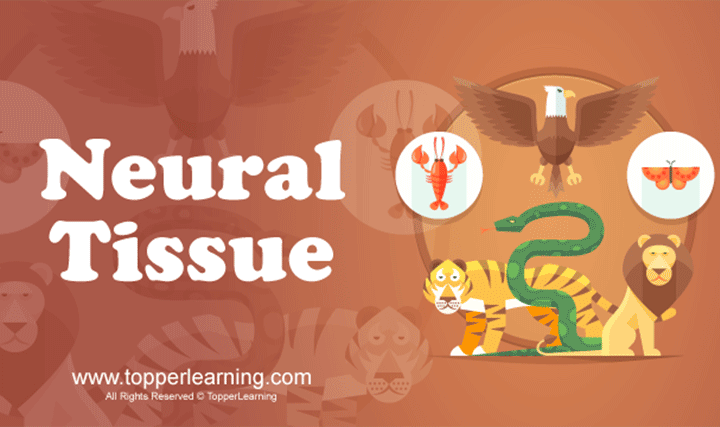 Structural Organisation in Animals, Animal Tissues
Structural Organisation in Animals, Animal Tissues -
Cockroach- Blood Vascular System
 This video explains the parts of the circulatory system and the process of blood circulation in cockroach.
This video explains the parts of the circulatory system and the process of blood circulation in cockroach. -
Cockroach- Nervous System
 This video explains the parts of the nervous system and the different sense organs in cockroach.
This video explains the parts of the nervous system and the different sense organs in cockroach. -
Cockroach- Reproductive System
 This video explains the parts of the male and the female reproductive system, process of fertilisation and development in cockroach.
This video explains the parts of the male and the female reproductive system, process of fertilisation and development in cockroach. -
Cockroach- Respiratory System
 This video explains the parts of the respiratory system and process of respiration in cockroach.
This video explains the parts of the respiratory system and process of respiration in cockroach. -
Cell Size and Cell Theory
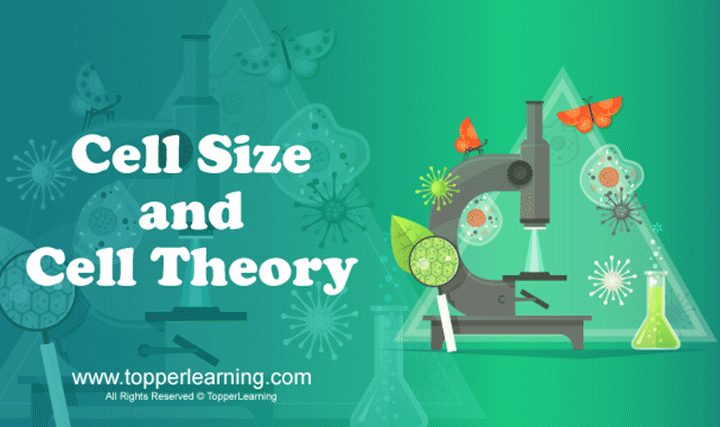 This video explains about cell size and cell theory
This video explains about cell size and cell theory -
Introduction to Prokaryotic Cells
 This video explains about introduction to prokaryotic cells
This video explains about introduction to prokaryotic cells -
Cell Membrane and Cell Wall
 This video explains about cell membrane and cell wall
This video explains about cell membrane and cell wall -
Endoplasmic Reticulum
 This video explains about endoplasmic reticulum
This video explains about endoplasmic reticulum -
Golgi Apparatus
 This video explains about golgi apparatus
This video explains about golgi apparatus -
Lysosomes
 This video explains about lysosomes
This video explains about lysosomes -
Vacuoles
 This video explains about vacuoles
This video explains about vacuoles -
Mitochondria
 This video explains about mitochondria
This video explains about mitochondria -
Plastids
 This video explains about plastids
This video explains about plastids -
Ribosomes and Cytoskeleton
 This video explains about ribosomes and cytoskeleton
This video explains about ribosomes and cytoskeleton -
Cilia and Flagella
 This video explains about cilia and flagella
This video explains about cilia and flagella -
Centrosome and Centrioles
 This video explains about centrosome and centrioles
This video explains about centrosome and centrioles -
Nucleus and Microbodies
 This video explains about nucleus and microbodies
This video explains about nucleus and microbodies -
Amino acids
 This video explains about amino acids
This video explains about amino acids -
Lipids
 This video explains about lipids
This video explains about lipids -
Nitrogen Bases
 This video explains about nitrogen bases
This video explains about nitrogen bases -
Primary and Secondary Metabolites
 This video explains about primary and secondary metabolites
This video explains about primary and secondary metabolites -
Biomacromolecules
 This video explains about biomacromolecules
This video explains about biomacromolecules -
Activation Energy of Enzymes
 This video discusses the concept of activation energy and the factors affecting activation energy.
This video discusses the concept of activation energy and the factors affecting activation energy. -
Factors Affecting Enzyme Activity
 This video explains the factors which affect the catalytic activity of the enzymes.
This video explains the factors which affect the catalytic activity of the enzymes. -
Inhibition of Enzyme Action
 This video explains inhibition and the different types of inhibition - competitive, non-competitive and allosteric inhibition.
This video explains inhibition and the different types of inhibition - competitive, non-competitive and allosteric inhibition. -
Cytokinesis in Plant and Animal Cells
 This video explains the differences between cytokinesis in plant cells and animal cells.
This video explains the differences between cytokinesis in plant cells and animal cells. -
Anaphase -Chromosome Movement to Poles
 This video explains the mechanism of chromosomal movement to the poles of spindle during anaphase of mitosis.
This video explains the mechanism of chromosomal movement to the poles of spindle during anaphase of mitosis. -
Cancer- Occurrence
 This video discusses why older people are at a greater risk of developing cancer.
This video discusses why older people are at a greater risk of developing cancer. -
Division in Mitochondria and Chloroplast
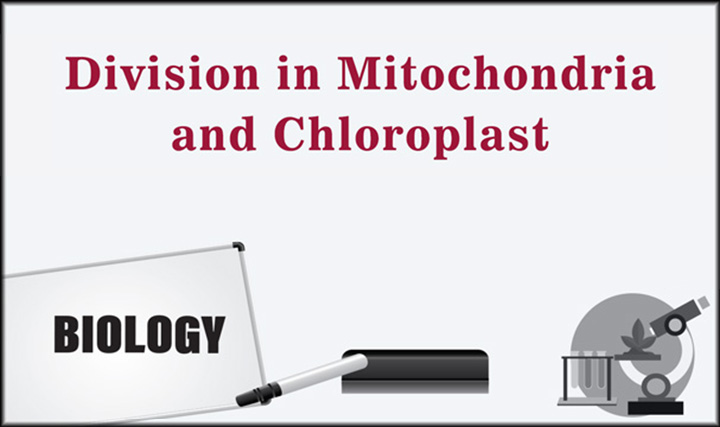 This video explains the division of mitochondria and chloroplast.
This video explains the division of mitochondria and chloroplast. -
Prophase and Telophase
 This video discusses how telophase is reverse of prophase.
This video discusses how telophase is reverse of prophase. -
Phases of Cell Cycle
 This video describes the phases of cell cycle - interphase and mitotic phase.
This video describes the phases of cell cycle - interphase and mitotic phase. -
Diffusion and Mass Flow System
 This video explains the need for mass or bulk flow system of transport in plants.
This video explains the need for mass or bulk flow system of transport in plants. -
Ascent of Sap
 This video explains the role of cohesion and adhesive force in ascent of sap.
This video explains the role of cohesion and adhesive force in ascent of sap. -
Transpiration
 This video discusses that rate of transpiration is different for different plant species.
This video discusses that rate of transpiration is different for different plant species. -
Transpiration and Evaporation
 This video explains how plants have a mechanism to overcome the water loss through transpiration.
This video explains how plants have a mechanism to overcome the water loss through transpiration. -
Exarch in Root and Endarch in Stem
 This video explains why primary xylem in root is of exarch type whereas in stem it is of endarch type.
This video explains why primary xylem in root is of exarch type whereas in stem it is of endarch type. -
Mass Flow Hypothesis
 This video explains the process of translocation of food through phloem by Munch's mass flow hypothesis.
This video explains the process of translocation of food through phloem by Munch's mass flow hypothesis. -
Physical Force Theories of Ascent of Sap
 This video details the physical force theories to explain the process of ascent of sap- capillarity theory, imbibition force theory and cohesion-adhesion theory.
This video details the physical force theories to explain the process of ascent of sap- capillarity theory, imbibition force theory and cohesion-adhesion theory. -
Root Pressure Theory
 This video explains the concept of root pressure and the theory of root pressure for ascent of sap.
This video explains the concept of root pressure and the theory of root pressure for ascent of sap. -
Uptake and Transport of Mineral Nutrients
 This video discusses the mechanism of uptake and transport of mineral ions.
This video discusses the mechanism of uptake and transport of mineral ions. -
Symplast Pathway

This video explains the symplast pathway for transport of water and minerals in plants.
-
Hydroponics
 This video explains the importance of purification of water and nutrient salts in hydroponics.
This video explains the importance of purification of water and nutrient salts in hydroponics. -
Nitrogen Fixation - Rhizobium
 This video discusses the conditions necessary for fixation of atmospheric nitrogen by Rhizobium.
This video discusses the conditions necessary for fixation of atmospheric nitrogen by Rhizobium. -
Symbiosis - Mycorrhiza
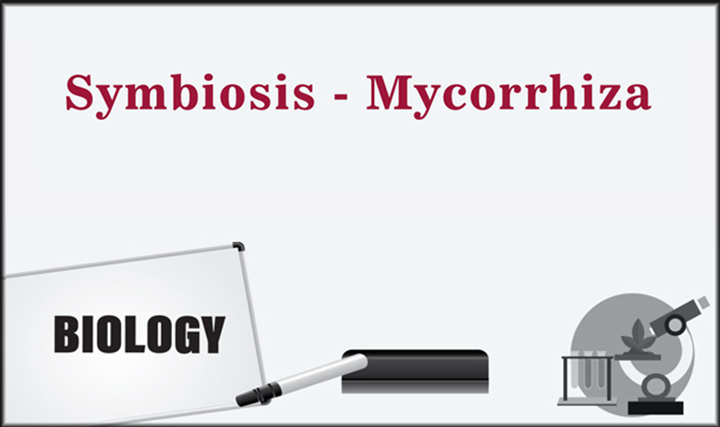 This video explains the symbiotic association of Mycorrhiza.
This video explains the symbiotic association of Mycorrhiza. -
Toxicity of Mineral Nutrients - Part 1
 This video discusses how excess of one micronutrient can prove toxic to the other micronutrient.
This video discusses how excess of one micronutrient can prove toxic to the other micronutrient. -
Toxicity of Mineral Nutrients - Part 2
 This video discusses how excess of one micronutrient can prove toxic to the other micronutrient.
This video discusses how excess of one micronutrient can prove toxic to the other micronutrient. -
Mechanism of Photosynthesis
 This video describes the mechanism of photosynthesis, introduces and differentiates between light and dark reactions of photosynthesis.
This video describes the mechanism of photosynthesis, introduces and differentiates between light and dark reactions of photosynthesis. -
Electron Transport Chain_Z Scheme
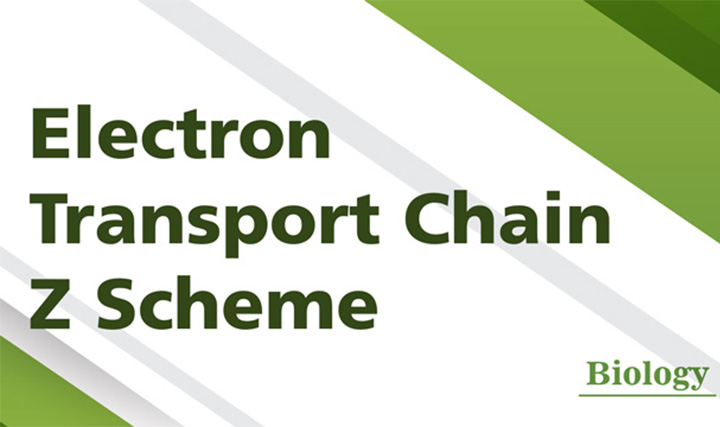 This video describes the process of electron transport chain during photosynthesis and explains why this process is also called the Z scheme.
This video describes the process of electron transport chain during photosynthesis and explains why this process is also called the Z scheme. -
CAM Cycle
 This video describes the modifications in CAM plants and the events in CAM cycle.
This video describes the modifications in CAM plants and the events in CAM cycle. -
Chloroplast
 This video describes the ultrastructure of chloroplast.
This video describes the ultrastructure of chloroplast. -
Calvin Cycle - C3 Cycle
 This video explains the different phases of the Calvin or C3 cycle of photosynthesis.
This video explains the different phases of the Calvin or C3 cycle of photosynthesis. -
Cyclic and Non-Cyclic Photophophorylation
 This video describes the mechanism of cyclic and non-cyclic photophosphorylation of photosynthesis.
This video describes the mechanism of cyclic and non-cyclic photophosphorylation of photosynthesis. -
Hatch Slack Cycle - C4 Cycle
 This video explains the mechanism of Hatch-Slack or C4 pathway of photosynthesis.
This video explains the mechanism of Hatch-Slack or C4 pathway of photosynthesis. -
Oxidation of Nutrients for Energy Release
 This video discusses the amount of release of energy from different nutrients basis their calorific value.
This video discusses the amount of release of energy from different nutrients basis their calorific value. -
Glucose - Instant Energy Source
 This video explains how glucose acts as an instant source of energy as compared to proteins.
This video explains how glucose acts as an instant source of energy as compared to proteins. -
Glycolysis
 This video discusses the energy-yielding reactions of glycolysis.
This video discusses the energy-yielding reactions of glycolysis. -
ATP Synthesis
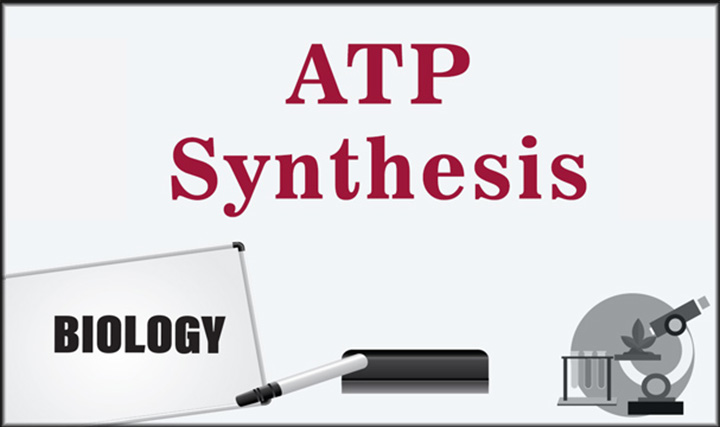 This video discusses the mechanism for synthesis of ATP during respiration.
This video discusses the mechanism for synthesis of ATP during respiration. -
Substrate Level Phosphorylation
 This video explains substrate level phosphorylation and its occurrence in TCA cycle.
This video explains substrate level phosphorylation and its occurrence in TCA cycle. -
Electron Transport System
 This video explains the process of electron transport system and role of electron carriers.
This video explains the process of electron transport system and role of electron carriers. -
Fermentation
 This video details the process and types of fermentation.
This video details the process and types of fermentation. -
Glycolysis
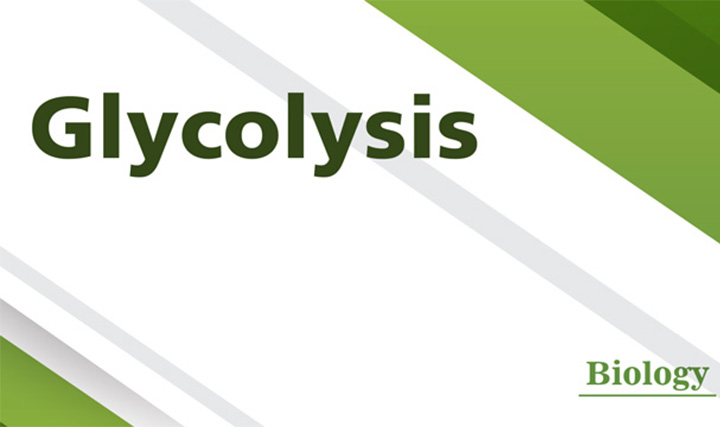 This video explains the events in the glycolytic pathway.
This video explains the events in the glycolytic pathway. -
Krebs Cycle
 This video details the events which take place during aerobic respiration through Krebs cycle.
This video details the events which take place during aerobic respiration through Krebs cycle. -
Respiratory Balance Sheet
 This video explains the calculations of net gain of ATP during the process of respiration.
This video explains the calculations of net gain of ATP during the process of respiration. -
Respiratory Quotient
 This video explains the concept of respiratory quotient for carbohydrates, proteins and fats as substrates.
This video explains the concept of respiratory quotient for carbohydrates, proteins and fats as substrates. -
Abscisic Acid - Stress Hormone
 This video explains why abscisic acid is called stress hormone.
This video explains why abscisic acid is called stress hormone. -
Apical Dominance
 This video explains the need to overcome apical dominance to promote the growth of lateral buds.
This video explains the need to overcome apical dominance to promote the growth of lateral buds. -
Vernalisation
 This video explains the effect of vernalisation on plant growth.
This video explains the effect of vernalisation on plant growth. -
Effect of Ethylene
 This video explains the effect of ethylene on plant growth.
This video explains the effect of ethylene on plant growth. -
Effect of Gibberellins
 This video explains the effect of gibberellins on plant growth.
This video explains the effect of gibberellins on plant growth. -
Macronutrients
 This video describes the physiological role and deficiency symptoms of common macronutrients.
This video describes the physiological role and deficiency symptoms of common macronutrients. -
Micronutrients
 This video describes the physiological role and deficiency symptoms of common micronutrients.
This video describes the physiological role and deficiency symptoms of common micronutrients. -
Digestion of Fats
 This video explains why digestion of proteins cannot occur in stomach.
This video explains why digestion of proteins cannot occur in stomach. -
Absorption of Fats
 This video explains the process of absorption of fats in the body.
This video explains the process of absorption of fats in the body. -
Taste Buds
 This video discusses how different taste buds detect different food tastes.
This video discusses how different taste buds detect different food tastes. -
Role of Gall Bladder
 This video explains the role of gall bladder in the process of digestion of food.
This video explains the role of gall bladder in the process of digestion of food. -
Types of Teeth - Canines
 This video discusses the significance of tearing teeth (canines) in animals.
This video discusses the significance of tearing teeth (canines) in animals. -
Absorption of Digested Food
 This video explains the process of absorption of food and the mechanism of absorption of carbohydrates, fats, amino acids, electrolytes and water in the body.
This video explains the process of absorption of food and the mechanism of absorption of carbohydrates, fats, amino acids, electrolytes and water in the body. -
Human Digestive System
 This video explains the different parts of the human digestive system.
This video explains the different parts of the human digestive system. -
Physiology of Digestion
 This video explains the process of digestion in buccal cavity, stomach and small intestine.
This video explains the process of digestion in buccal cavity, stomach and small intestine. -
Exchange of Gases at Alveoli
 This video explains why diffusion of gases occurs only in the alveolar region and not in the other parts of the respiratory system.
This video explains why diffusion of gases occurs only in the alveolar region and not in the other parts of the respiratory system. -
Transport of Carbon dioxide in the Body
 This video discusses the different mechanisms of transport of carbon dioxide in the body.
This video discusses the different mechanisms of transport of carbon dioxide in the body. -
Venous and Arterial Blood
 This video discusses why venous blood is more acidic as compared to arterial blood.
This video discusses why venous blood is more acidic as compared to arterial blood. -
Residual Volume of Air
 This video discusses why exchange of gases continue to occur in lungs even after maximum expiration.
This video discusses why exchange of gases continue to occur in lungs even after maximum expiration. -
Nasal and Mouth Breathing
 This video explains why nasal breathing is better than mouth breathing.
This video explains why nasal breathing is better than mouth breathing. -
Human Respiratory System
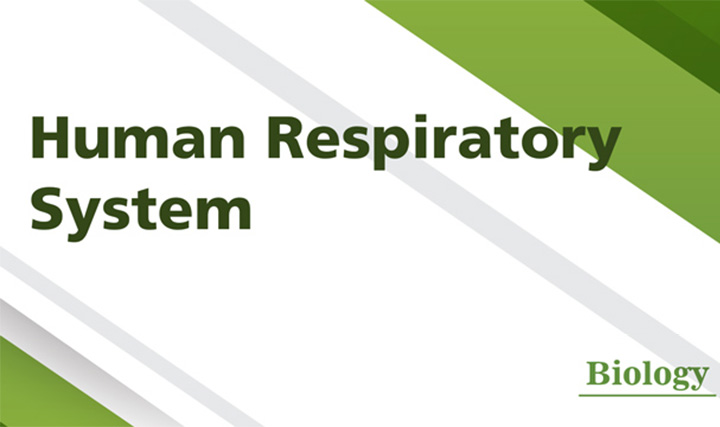 This video explains the different parts of the human respiratory system.
This video explains the different parts of the human respiratory system. -
Lungs_Structure and Function
 This video explains the external and internal structure of lungs.
This video explains the external and internal structure of lungs. -
Closed Circulatory System
 This video discusses the advantages of closed circulatory system over open circulatory system.
This video discusses the advantages of closed circulatory system over open circulatory system. -
Transport in Lower Organisms by Diffusion
 This video explains how lower organisms obtain nutrients and oxygen by the process of diffusion.
This video explains how lower organisms obtain nutrients and oxygen by the process of diffusion. -
Valves in Veins
 This video explains why valves are present in veins but not in arteries.
This video explains why valves are present in veins but not in arteries. -
Electrocardiogram (ECG) - Significance
 This video explains about ECG and its usefulness in the diagnosis of cardiac disorders.
This video explains about ECG and its usefulness in the diagnosis of cardiac disorders. -
Circulatory Pathways
 This video talks about the phylum which has a circulatory system closest to vertebrate circulatory system.
This video talks about the phylum which has a circulatory system closest to vertebrate circulatory system. -
Cardiac Cycle
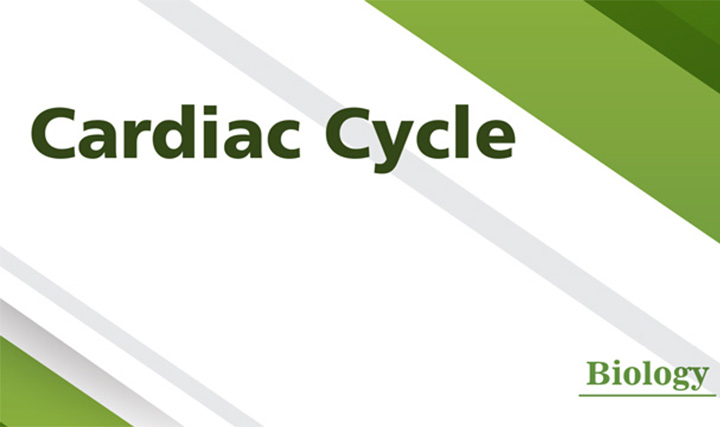 This video discusses the events in a cardiac cycle - atrial systole and ventricular diastole, atrial diastole and ventricular systole and joint diastole.
This video discusses the events in a cardiac cycle - atrial systole and ventricular diastole, atrial diastole and ventricular systole and joint diastole. -
Circulatory Pathways
 This video explains the two types of circulatory pathways - open circulatory and close circulatory pathway.
This video explains the two types of circulatory pathways - open circulatory and close circulatory pathway. -
Conducting System of Human Heart
 This video explains the conducting system of the heart - sinoatrial node, purkinje fibres and bundle of His.
This video explains the conducting system of the heart - sinoatrial node, purkinje fibres and bundle of His. -
Coronary Circulation
 This video explains the process of coronary circulation in human heart.
This video explains the process of coronary circulation in human heart. -
Blood Coagulation
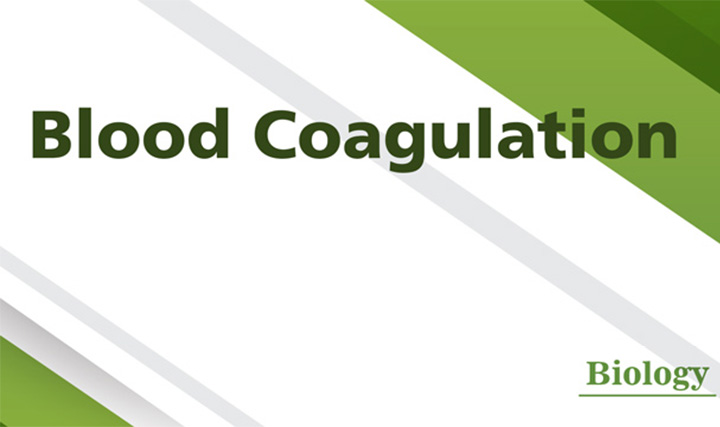 This video details the process of blood clotting or blood coagulation.
This video details the process of blood clotting or blood coagulation. -
Hearts in Vertebrates
 This video explains the structure of heart in vertebrates such as fishes, amphibians, reptiles, birds and mammals.
This video explains the structure of heart in vertebrates such as fishes, amphibians, reptiles, birds and mammals. -
Human Heart
 This video explains the location, structure and functions of human heart.
This video explains the location, structure and functions of human heart. -
Types of Heart
 This video describes the different types of heart based on type of blood, origin of impulse and structure of the heart.
This video describes the different types of heart based on type of blood, origin of impulse and structure of the heart. -
Renin Angiotensin Aldosterone System (RAAS)
 This video details the role played by renin-angiotensin in the regulation of kidney function.
This video details the role played by renin-angiotensin in the regulation of kidney function. -
Osmoregulation
 This video discusses osmoregulation in sharks, amphibians, reptiles, birds and desert mammals.
This video discusses osmoregulation in sharks, amphibians, reptiles, birds and desert mammals. -
Osmoregulation
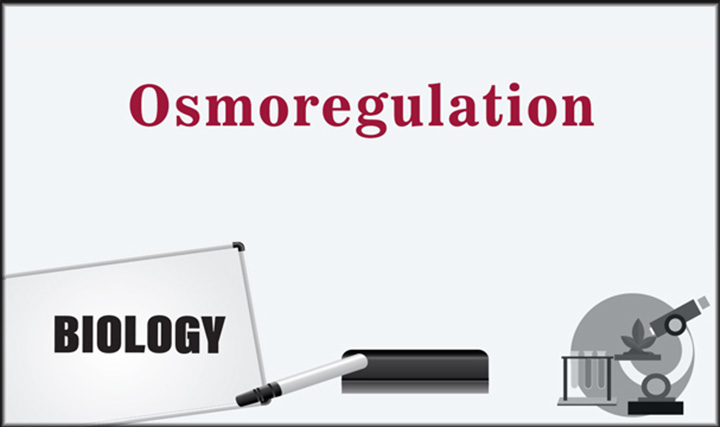 This video explains why it is not advisable to drink lots of water after heavy sweating.
This video explains why it is not advisable to drink lots of water after heavy sweating. -
Excretion in Desert Mammals
 This video explains why desert mammals have longer Henle's loops.
This video explains why desert mammals have longer Henle's loops. -
Tubular Secretion
 This video discusses how tubular secretion helps in maintaining ionic and acid-base balance in body fluids.
This video discusses how tubular secretion helps in maintaining ionic and acid-base balance in body fluids. -
Function of Tubules in Urine Formation
 This video discusses the functions and the roles of PCT, DCT, loop of Henle and collecting duct in urine formation.
This video discusses the functions and the roles of PCT, DCT, loop of Henle and collecting duct in urine formation. -
Haemodialysis
 This video explains the process of haemodialysis and the role of artificial kidney.
This video explains the process of haemodialysis and the role of artificial kidney. -
Micturition
 This video explains the physiology of the process of micturition.
This video explains the physiology of the process of micturition. -
Selective Reabsorption
 This video explains the physiology of the process of selective reabsorption.
This video explains the physiology of the process of selective reabsorption. -
Ultrafiltration
 This video explains the process of ultrafiltration during urine formation in the body.
This video explains the process of ultrafiltration during urine formation in the body. -
Urine Concentration-Counter Current Mechanism
 This video explains the process of urine concentration by the counter-current mechanism.
This video explains the process of urine concentration by the counter-current mechanism. -
Red Muscle Fibres - Aerobic Muscles
 This video explains how red muscle fibres are able to produce energy continuously.
This video explains how red muscle fibres are able to produce energy continuously. -
Osteoarthritis
 This video explains why osteoarthritis is more common in old people.
This video explains why osteoarthritis is more common in old people. -
Synovial Joint
 This video explains how synovial joints are freely movable.
This video explains how synovial joints are freely movable. -
Contractile Movements in Hydra
 This video explains how Hydra shows contractile movements of body though it lacks muscular tissue.
This video explains how Hydra shows contractile movements of body though it lacks muscular tissue. -
Sliding Filament Theory
 This video explains the sliding filament theory of muscle contraction.
This video explains the sliding filament theory of muscle contraction. -
Skull
 This video explains the structure and functions of different kinds of skull bones.
This video explains the structure and functions of different kinds of skull bones. -
Ribs
 This video describes the structure and functions of different kinds of ribs in the body.
This video describes the structure and functions of different kinds of ribs in the body. -
Sternum
 This video describes the structure and functions of sternum bone in the body.
This video describes the structure and functions of sternum bone in the body. -
Limb Bones
 This video details the bones of the forelimbs and the hindlimbs.
This video details the bones of the forelimbs and the hindlimbs. -
Pectoral Girdle
 This video describes the bones of the pectoral girdle - scapula and clavicle.
This video describes the bones of the pectoral girdle - scapula and clavicle. -
Pelvic Girdle
 This video describes the bones and the functions of the pelvic girdle.
This video describes the bones and the functions of the pelvic girdle. -
Cerebral Cortex
 This video explains why cerebral cortex is highly folded.
This video explains why cerebral cortex is highly folded. -
Temporal Lobe
 This video explains the effects due to damage of the temporal lobe.
This video explains the effects due to damage of the temporal lobe. -
Action Potential for Conduction of Nerve Impulse
 This video discusses the important features of action potential responsible for conduction of nerve impulse.
This video discusses the important features of action potential responsible for conduction of nerve impulse. -
Blind Spot
 This video explains why blind spot is insensitive to light, though it is a part of photosensitive layer.
This video explains why blind spot is insensitive to light, though it is a part of photosensitive layer. -
Vision in Dim Light
 This video explains why we can see better in dim light even by looking through the corner of the eye.
This video explains why we can see better in dim light even by looking through the corner of the eye. -
Specificity of Hormones
 This video describes the specificity of hormones to target cells.
This video describes the specificity of hormones to target cells. -
Mechanism of Steroid Hormones Action
 This video explains the mechanism of action of steroid hormones.
This video explains the mechanism of action of steroid hormones. -
Role of cAMP in Hormone Action
 This video discusses the role of cAMP in hormone action.
This video discusses the role of cAMP in hormone action. -
Effect of Insulin and Glucagon
 This video explains how insulin and glucagon hormones are antagonistic in nature.
This video explains how insulin and glucagon hormones are antagonistic in nature. -
Role of Thymic Hormones
 This video explains the importance of thymic hormones in immunity.
This video explains the importance of thymic hormones in immunity. -
Pineal Gland
 This video explains the structure and the role of pineal gland in the body.
This video explains the structure and the role of pineal gland in the body. -
Pituitary Gland
 This video describes the structure of pituitary gland, the hormones secreted and the diseases caused due to hypo and hypersecretion of these hormones.
This video describes the structure of pituitary gland, the hormones secreted and the diseases caused due to hypo and hypersecretion of these hormones. -
Adrenal Gland
 This video describes the structure of adrenal gland, the hormones secreted and the diseases caused due to hypo and hypersecretion of these hormones.
This video describes the structure of adrenal gland, the hormones secreted and the diseases caused due to hypo and hypersecretion of these hormones. -
Pancreas
 This video describes the structure of pancreas, hormones secreted and their effects on the body.
This video describes the structure of pancreas, hormones secreted and their effects on the body. -
Testes and Ovaries
 This video describes the structure of testes and ovaries, hormones secreted and their effects on the body.
This video describes the structure of testes and ovaries, hormones secreted and their effects on the body. -
Thymus Gland
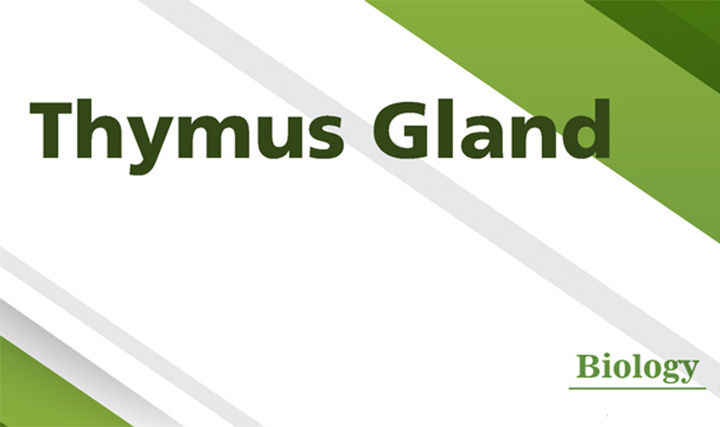 This video describes the structure of thymus gland, hormones secreted and their effects on the body.
This video describes the structure of thymus gland, hormones secreted and their effects on the body. -
Thyroid Gland
 This video describes the structure of thyroid gland, hormones secreted and their effects on the body.
This video describes the structure of thyroid gland, hormones secreted and their effects on the body. -
Gemmae Formation
 This video explains the concept of gemmae formation.
This video explains the concept of gemmae formation. -
Sporulation
 This video explains the concept of sporulation.
This video explains the concept of sporulation. -
Reproduction in Organisms
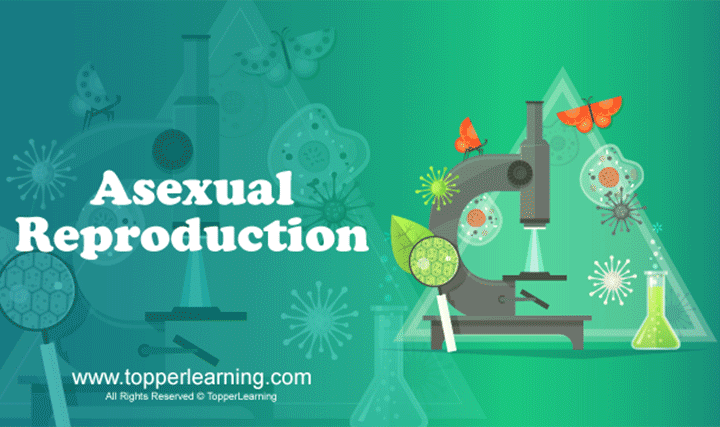 Reproduction in Organisms, Asexual Reproduction
Reproduction in Organisms, Asexual Reproduction -
Reproduction in Organisms
 Reproduction in Organisms, Sexual Reproduction
Reproduction in Organisms, Sexual Reproduction -
Reproduction in Organisms
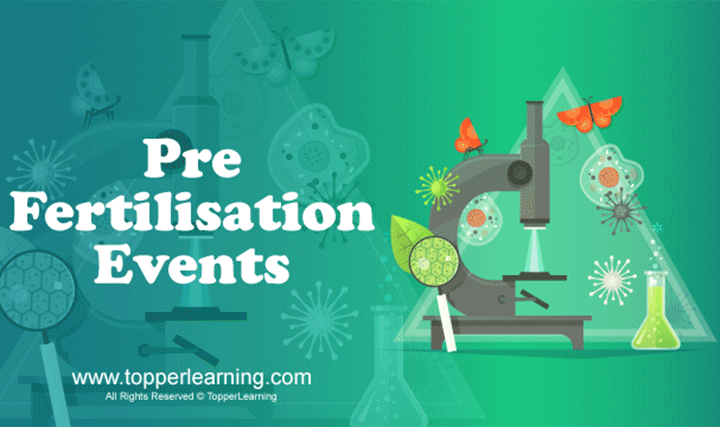 Reproduction in Organisms, Sexual Reproduction
Reproduction in Organisms, Sexual Reproduction -
Multiple Fission
 This video explains the concept of multiple fission.
This video explains the concept of multiple fission. -
Plasmotomy
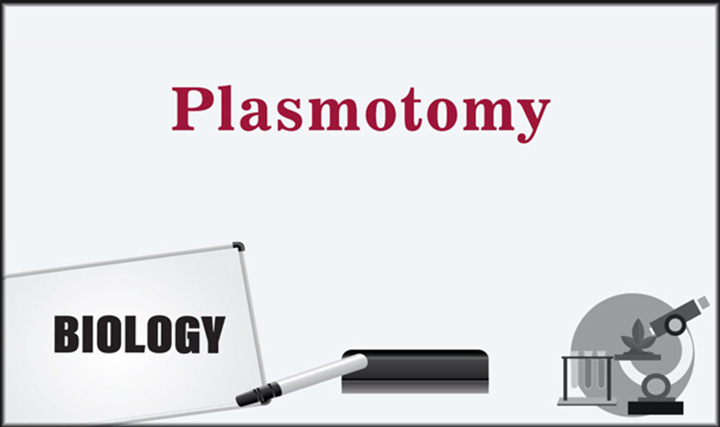 This video explains the concept of plasmotomy.
This video explains the concept of plasmotomy. -
Budding
 This video explains the concept of budding.
This video explains the concept of budding. -
Fragmentation
 This video explains the concept of fragmentation.
This video explains the concept of fragmentation. -
Regeneration
 This video explains the concept of regeneration.
This video explains the concept of regeneration. -
Artificial Vegetative Propagation
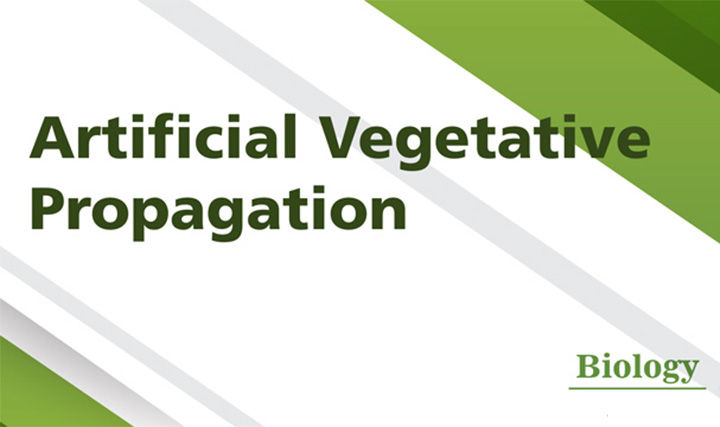 This video details artificial vegetative propagation and explains the different methods of artificially propagating plants - cutting, layering, grafting and micropropagation.
This video details artificial vegetative propagation and explains the different methods of artificially propagating plants - cutting, layering, grafting and micropropagation. -
Natural Vegetative Propagation
 This video details natural vegetative propagation and explains the different methods of naturally propagating plants through roots, stems, leaves, bulbils and turions.
This video details natural vegetative propagation and explains the different methods of naturally propagating plants through roots, stems, leaves, bulbils and turions. -
Parthenogenesis
 This video explains about parthenogenesis - types and advantages and disadvantages.
This video explains about parthenogenesis - types and advantages and disadvantages. -
Sexual Reproduction in Flowering Plants
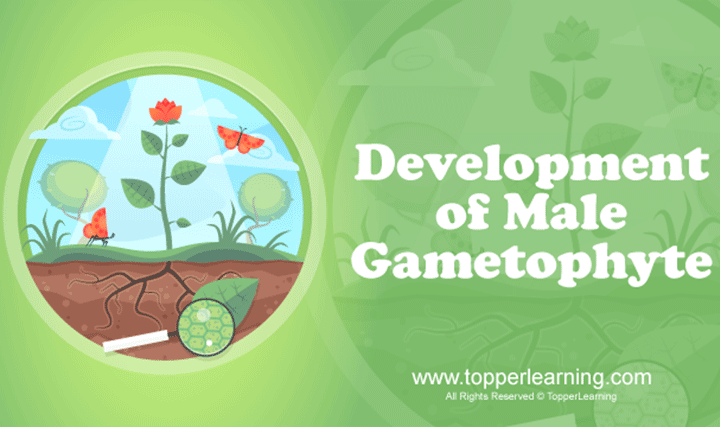 Sexual Reproduction in Flowering Plants, Prefertilisation: Structures and Events
Sexual Reproduction in Flowering Plants, Prefertilisation: Structures and Events -
Sexual Reproduction in Flowering Plants
 Sexual Reproduction in Flowering Plants, Prefertilisation: Structures and Events
Sexual Reproduction in Flowering Plants, Prefertilisation: Structures and Events -
Sexual Reproduction in Flowering Plants
 Sexual Reproduction in Flowering Plants, Pollination
Sexual Reproduction in Flowering Plants, Pollination -
Sexual Reproduction in Flowering Plants
 Sexual Reproduction in Flowering Plants, Pollination
Sexual Reproduction in Flowering Plants, Pollination -
Sexual Reproduction in Flowering Plants
 Sexual Reproduction in Flowering Plants, Double Fertilisation, Post Fertilisation: Structures and Events
Sexual Reproduction in Flowering Plants, Double Fertilisation, Post Fertilisation: Structures and Events -
Sexual Reproduction in Flowering Plants
 Sexual Reproduction in Flowering Plants, Double Fertilisation, Post Fertilisation: Structures and Events
Sexual Reproduction in Flowering Plants, Double Fertilisation, Post Fertilisation: Structures and Events -
Sexual Reproduction in Flowering Plants
 Sexual Reproduction in Flowering Plants, Double Fertilisation, Post Fertilisation: Structures and Events
Sexual Reproduction in Flowering Plants, Double Fertilisation, Post Fertilisation: Structures and Events -
Sexual Reproduction in Flowering Plants
 Sexual Reproduction in Flowering Plants, Double Fertilisation, Post Fertilisation: Structures and Events
Sexual Reproduction in Flowering Plants, Double Fertilisation, Post Fertilisation: Structures and Events -
Sexual Reproduction in Flowering Plants

This video talks about the techniques of artificial hybridisation in plants
-
Sexual Reproduction in Flowering Plants
 Sexual Reproduction in Flowering Plants, Prefertilisation: Structures and Events
Sexual Reproduction in Flowering Plants, Prefertilisation: Structures and Events -
Apomixis
 This video explains the meaning, types and advantages of apomixis.
This video explains the meaning, types and advantages of apomixis. -
Human Reproduction

This video talks about the male reproductive system in humans
-
Human Reproduction
 Human Reproduction, Male and Female Reproductive System
Human Reproduction, Male and Female Reproductive System -
Human Reproduction
 Human Reproduction, Male and Female Reproductive System
Human Reproduction, Male and Female Reproductive System -
Human Reproduction
 Human Reproduction, Male and Female Reproductive System
Human Reproduction, Male and Female Reproductive System -
Human Reproduction
 Human Reproduction, Gametogenesis and Menstrual Cycle
Human Reproduction, Gametogenesis and Menstrual Cycle -
Human Reproduction
 Human Reproduction, Gametogenesis and Menstrual Cycle
Human Reproduction, Gametogenesis and Menstrual Cycle -
Human Reproduction
 Human Reproduction, Gametogenesis and Menstrual Cycle
Human Reproduction, Gametogenesis and Menstrual Cycle -
Human Reproduction
 Human Reproduction, Fertilisation, Embryonic Development and Parturition
Human Reproduction, Fertilisation, Embryonic Development and Parturition -
Human Reproduction
 Human Reproduction, Fertilisation, Embryonic Development and Parturition
Human Reproduction, Fertilisation, Embryonic Development and Parturition -
Embryonic Development
 This video talks about embryo development in humans
This video talks about embryo development in humans -
Human Reproduction
 Human Reproduction, Fertilisation, Embryonic Development and Parturition
Human Reproduction, Fertilisation, Embryonic Development and Parturition -
Reproductive Health
 Reproductive Health, Population Explosion and Birth Control
Reproductive Health, Population Explosion and Birth Control -
Reproductive Health
 Reproductive Health, Population Explosion and Birth Control
Reproductive Health, Population Explosion and Birth Control -
Reproductive Health
 Reproductive Health, Population Explosion and Birth Control
Reproductive Health, Population Explosion and Birth Control -
Reproductive Health
 Reproductive Health, Sexually Transmitted Diseases and Infertility
Reproductive Health, Sexually Transmitted Diseases and Infertility -
Reproductive Health
 Reproductive Health, Sexually Transmitted Diseases and Infertility
Reproductive Health, Sexually Transmitted Diseases and Infertility -
Assisted Reproductive Technologies
 This video talks about the assisted reproductive technologies in humans
This video talks about the assisted reproductive technologies in humans -
Principles of Inheritance and Variation
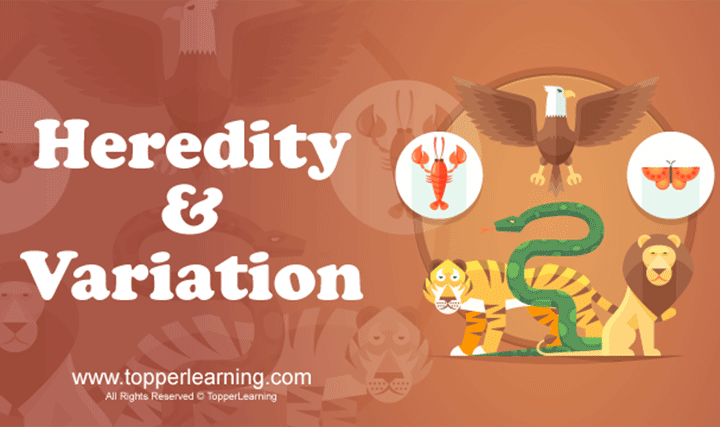 Principles of Inheritance and Variation, Mendel's Laws of Inheritance
Principles of Inheritance and Variation, Mendel's Laws of Inheritance -
Principles of Inheritance and Variation
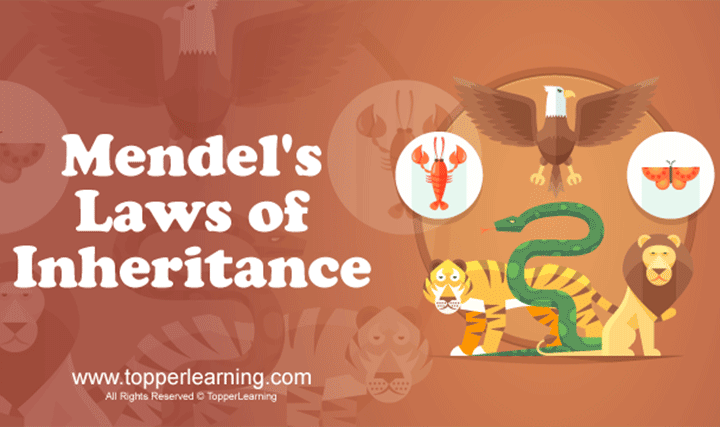 Principles of Inheritance and Variation, Mendel's Laws of Inheritance
Principles of Inheritance and Variation, Mendel's Laws of Inheritance -
Principles of Inheritance and Variation
 Principles of Inheritance and Variation, Mendel's Laws of Inheritance
Principles of Inheritance and Variation, Mendel's Laws of Inheritance -
Principles of Inheritance and Variation
 Principles of Inheritance and Variation, Mendel's Laws of Inheritance
Principles of Inheritance and Variation, Mendel's Laws of Inheritance -
Chromosomal Theory of Inheritance
 This video talks about the chromosomal theory of inheritance
This video talks about the chromosomal theory of inheritance -
Linkage
 This video talks about linkage of genes
This video talks about linkage of genes -
Crossing Over
 This video talks about crossing over in chromosomes
This video talks about crossing over in chromosomes -
Sex Determination in animals
 This video talks about sex determination in different organsism
This video talks about sex determination in different organsism -
Mutations
 This video talks about mutations and its types
This video talks about mutations and its types -
Pedigree Analysis
 This video talks about pedigree analysis and its importance
This video talks about pedigree analysis and its importance -
Principles of Inheritance and Variation
 Principles of Inheritance and Variation, Mutations and Genetic Disorders
Principles of Inheritance and Variation, Mutations and Genetic Disorders -
Principles of Inheritance and Variation
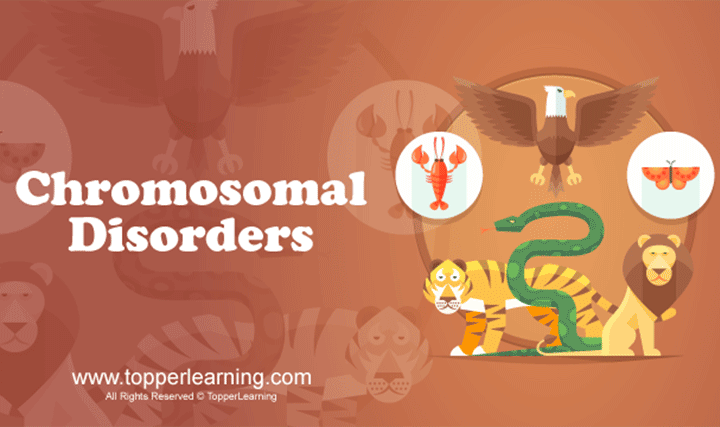 Principles of Inheritance and Variation, Mutations and Genetic Disorders
Principles of Inheritance and Variation, Mutations and Genetic Disorders -
DNA as Genetic Material
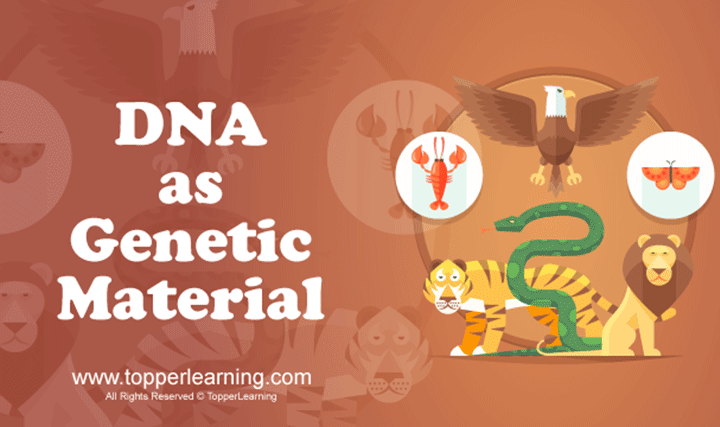 This video explains about DNA as genetic material
This video explains about DNA as genetic material -
DNA packaging and its properties
 This video talks about DNA packaging and its properties
This video talks about DNA packaging and its properties -
RNA as Genetic Material
 This video explains about RNA as genetic material
This video explains about RNA as genetic material -
Semiconservative Method of Replication
 This video explains about semiconservative method of replication
This video explains about semiconservative method of replication -
Process of Replication of DNA
 This video explains about process of DNA replication
This video explains about process of DNA replication -
Molecular Basis of Inheritance
 Molecular Basis of Inheritance, Transcription, Genetic Code and Types of RNA
Molecular Basis of Inheritance, Transcription, Genetic Code and Types of RNA -
Mechanism of Transcription
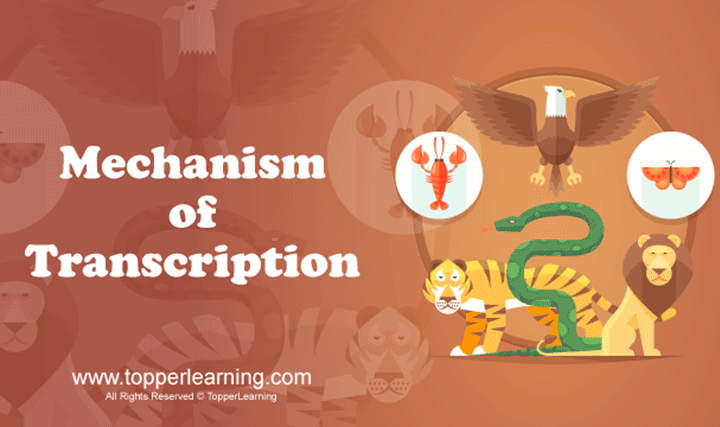 This video explains about mechanism of transcription
This video explains about mechanism of transcription -
Post-transcriptional Modification of RNA
 This video explains about post-transcriptional modification of RNA
This video explains about post-transcriptional modification of RNA -
Genetic Code
 This video explains about genetic code
This video explains about genetic code -
Mechanism of Translation
 This video explains about mechanism of translation
This video explains about mechanism of translation -
Gene Regulation in Prokaryotes
 This video explains about gene regulation in prokaryotes
This video explains about gene regulation in prokaryotes -
Gene Regulation in Eukaryotes
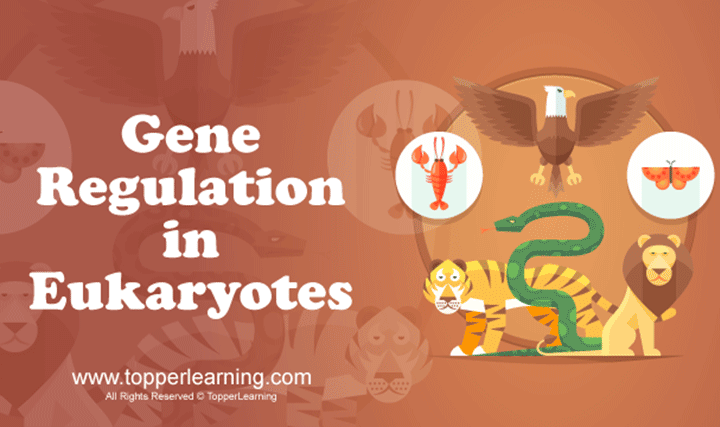 This video explains about gene regulation in eukaryotes
This video explains about gene regulation in eukaryotes -
DNA Fingerprinting
 This video explains about DNA fingerprinting
This video explains about DNA fingerprinting -
Theory of Lamarckism
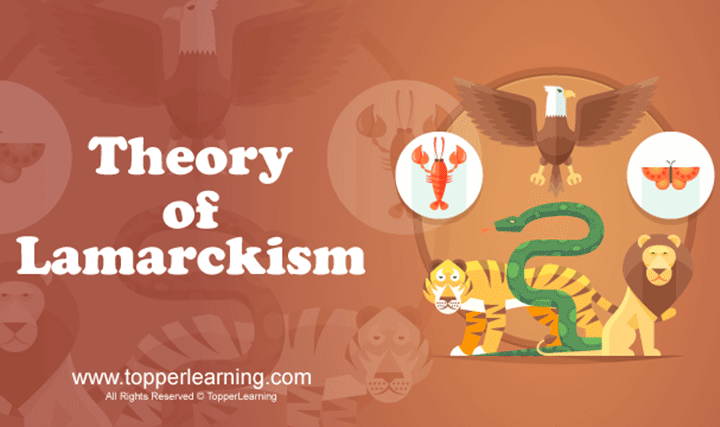 This video explains about theory of lamarckism
This video explains about theory of lamarckism -
Theory of Darwinism
 This video talks about theory of Darwinism
This video talks about theory of Darwinism -
De Vries’ Mutation Theory
 This video explains about de Vries' mutation theory
This video explains about de Vries' mutation theory -
Neo-Darwinism
 This video explains about Neo-Darwinism
This video explains about Neo-Darwinism -
Natural Selection
 This video explains about natural selection
This video explains about natural selection -
Evidences for Biological Evolution
 This video explain about evidences for bilogical evolution6
This video explain about evidences for bilogical evolution6 -
Speciation
 This video explains about speciation
This video explains about speciation -
Hardy–Weinberg Principle
 This video explains about Hardy–Weinberg Principle
This video explains about Hardy–Weinberg Principle -
Geological Time Scale of Earth
 This video explains about geological time scale of Earth
This video explains about geological time scale of Earth -
Miller-Urey Experiment
 This video describes the Miller-Urey experiment for chemical evolution of life.
This video describes the Miller-Urey experiment for chemical evolution of life. -
Oparin-Haldane's Theory of Evolution
 This video explains the Oparin-Haldane's theory of evolution of life.
This video explains the Oparin-Haldane's theory of evolution of life. -
Palaeontology
 This video details about palaentology - fossils and their significance in the study of evolution.
This video details about palaentology - fossils and their significance in the study of evolution. -
Diseases Caused by Bacteria
 This video explains about diseases caused by bacteria
This video explains about diseases caused by bacteria -
Diseases Caused By Protozoa
 This video explains about diseases caused by protozoa
This video explains about diseases caused by protozoa -
Diseases Caused By Helminths
 This video explains about diseases caused by helminths
This video explains about diseases caused by helminths -
Innate Immunity
 This video explains about innate immunity
This video explains about innate immunity -
Acquired Immunity
 This video explains about acquired immunity
This video explains about acquired immunity -
Humoral Immune Response
 This video explains about humoral immune response
This video explains about humoral immune response -
Vaccination and Immunisation
 This video explains about vacccination and immunisation
This video explains about vacccination and immunisation -
Disorders of the Immune System
 This video explains about disorders of immune system
This video explains about disorders of immune system -
AIDS
 This video explains about AIDS - causes, symptoms, diagnosis and preventive measures.
This video explains about AIDS - causes, symptoms, diagnosis and preventive measures. -
Mutation Breeding
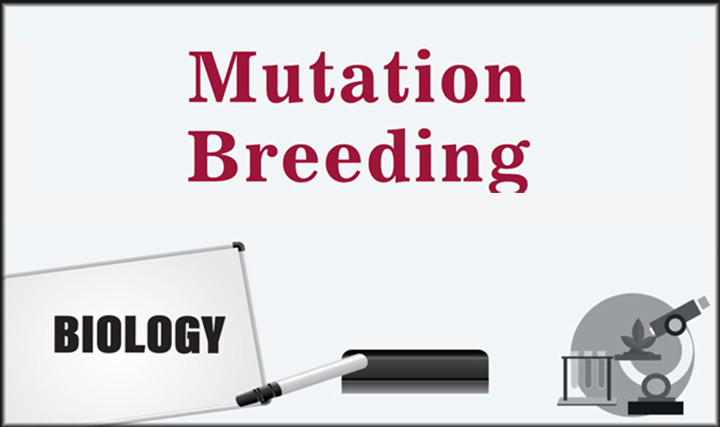 This video explains the technique of mutation breeding in developing crop varieties.
This video explains the technique of mutation breeding in developing crop varieties. -
Somatic Hybridisation
 This video explains the use of polyethylene glycol in somatic hybridisation.
This video explains the use of polyethylene glycol in somatic hybridisation. -
Suspension Cultures
 This video discusses about suspension cultures.
This video discusses about suspension cultures. -
Emaculation
 This video explains the significance of technique of emasculation.
This video explains the significance of technique of emasculation. -
Biofortification
 This video talks about biofortification as a means for improving nutritional quality.
This video talks about biofortification as a means for improving nutritional quality. -
Animal Breeding
 This video explains the different techniques of animal breeding - inbreeding and outbreeding and their types.
This video explains the different techniques of animal breeding - inbreeding and outbreeding and their types. -
Controlled Breeding Experiments
 This video discusses the controlled breeding experiments of animal breeding - techniques of artificial insemination and multiple ovulation embryo transfer.
This video discusses the controlled breeding experiments of animal breeding - techniques of artificial insemination and multiple ovulation embryo transfer. -
Plant Breeding

This video details the steps in plant breeding.
-
Biofertilisers- Azolla-Anabaena
 This video discusses the use of Azolla-Anabaena as biofertilisers.
This video discusses the use of Azolla-Anabaena as biofertilisers. -
Microbes in Curd Formation
 This video discusses the uses of microbes in curd formation.
This video discusses the uses of microbes in curd formation. -
Microbes in Sewage Treatment
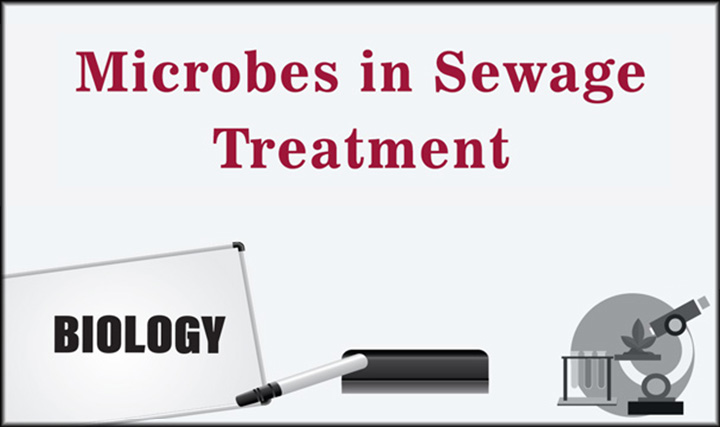 This video discusses the significance of BOD in sewage treatment.
This video discusses the significance of BOD in sewage treatment. -
Microbes in Sewage Treatment
 This video discusses the significance of floes in sewage treatment.
This video discusses the significance of floes in sewage treatment. -
Microbes in Health Improvement
 This video states the significance of microbes in the production of bioactive molecules.
This video states the significance of microbes in the production of bioactive molecules. -
Biofertilisers- Cyanobacteria
 This video discusses why cyanobacteria are not preferred as biofertilisers.
This video discusses why cyanobacteria are not preferred as biofertilisers. -
Selectable Markers in Cloning
 This video discusses the significance of selectable markers in cloning experiments.
This video discusses the significance of selectable markers in cloning experiments. -
Isolation of DNA Fragments by Gel Eletrophoresis
 This video explains the reasons of absence of DNA bands on agarose gel eletrophoresis.
This video explains the reasons of absence of DNA bands on agarose gel eletrophoresis. -
Competent Cells by Transformation
 This video explains the need for competent cells in biotechnology and the methods by which cells can be made competent.
This video explains the need for competent cells in biotechnology and the methods by which cells can be made competent. -
Polymerase Chain Reaction (PCR)
 This video explains the significance of different steps of PCR.
This video explains the significance of different steps of PCR. -
Continuous Culture Systems
 This video discusses the advantages of continuous culture systems.
This video discusses the advantages of continuous culture systems. -
Adaptation in Desert Topography
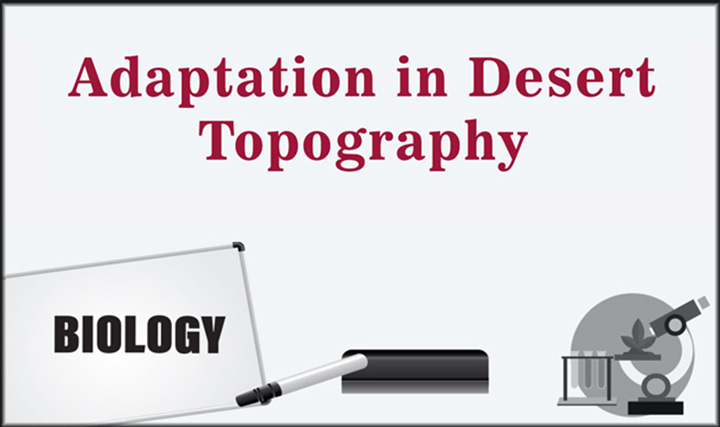 This video discusses the adaptation of fossorial organisms in desert topography.
This video discusses the adaptation of fossorial organisms in desert topography. -
Predation
 This video discusses about predation as a population intreaction.
This video discusses about predation as a population intreaction. -
Gause's Principle of Competitive Exclusion
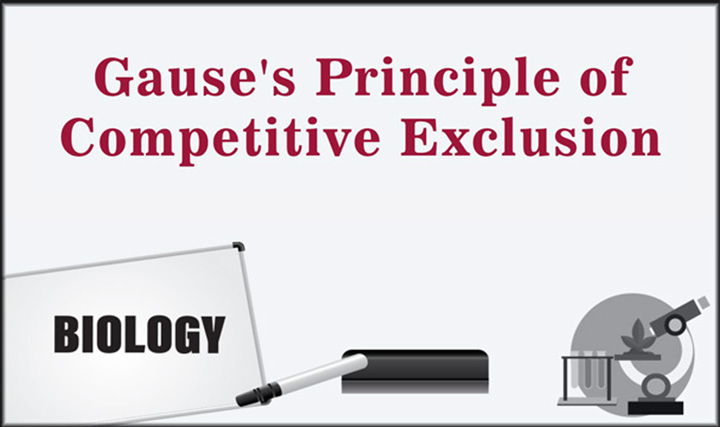 This video describes interspecific competition according to Gause's Principle of Competitive Exclusion.
This video describes interspecific competition according to Gause's Principle of Competitive Exclusion. -
Population Interactions
 This video describes about the features of population interactions with the help of an example of honeybees.
This video describes about the features of population interactions with the help of an example of honeybees. -
Population Growth Curve
 This video discusses about different stages of population growth curve.
This video discusses about different stages of population growth curve. -
Secondary Succession
 This video discusses about secondary succession with the help of an example of Alder trees in Glacial region.
This video discusses about secondary succession with the help of an example of Alder trees in Glacial region. -
Alpha Diversity in an Ecosystem
 This video describes about alpha diversity in an ecosystem.
This video describes about alpha diversity in an ecosystem. -
Primary Producers and Tertiary Consumers
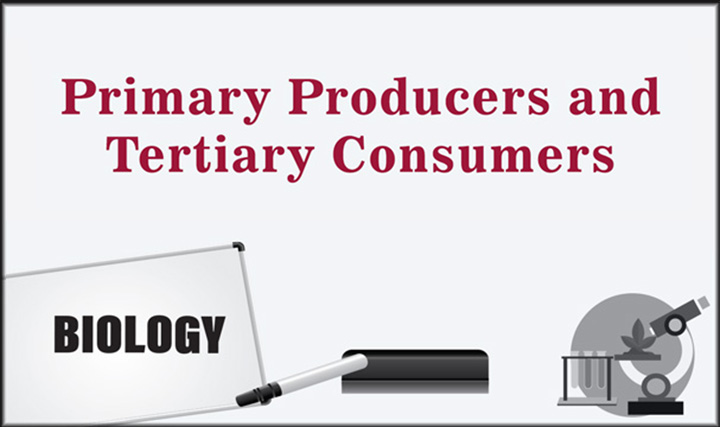 This video discusses why population of primary producers is much higher than the tertiary consumers.
This video discusses why population of primary producers is much higher than the tertiary consumers. -
Ecological Balance
 This video factors disturbing the ecological balance.
This video factors disturbing the ecological balance. -
Secondary Productivity
 This video discusses about net secondary productivity with the help of an example.
This video discusses about net secondary productivity with the help of an example. -
Benefits of Biodiversity
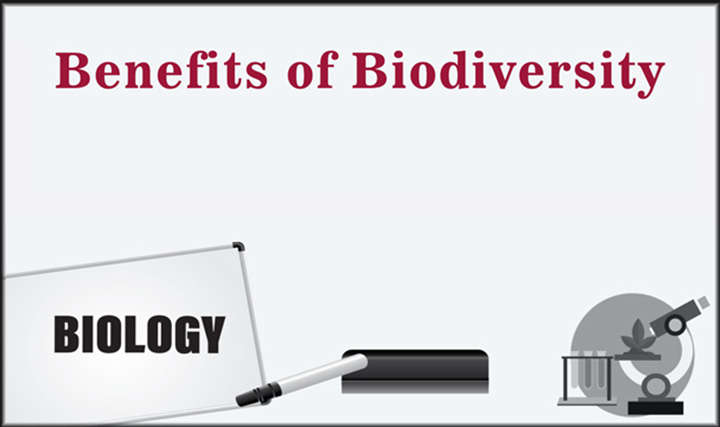 This video discusses the benefits of biodiversity.
This video discusses the benefits of biodiversity. -
Regional or Gamma Diversity
 This video explains regional or gamma diversity.
This video explains regional or gamma diversity. -
Activities in Biosphere Zones
 This video discusses about the activities which take place in the manipulation zone of the biosphere.
This video discusses about the activities which take place in the manipulation zone of the biosphere. -
Rhino Conservation Project
 This video discusses about the details of the Rhino conservation project.
This video discusses about the details of the Rhino conservation project. -
Ex situ Conservation

This video describes the ex situ conservation method for conservation of endemic species.
-
Eutrophication
 This video describes the chemicals responsible for eutrophication of water bodies.
This video describes the chemicals responsible for eutrophication of water bodies. -
Stabilisation Ponds
 This video explains how sewage water can be converted into useful water for irrigation through stabilisation ponds.
This video explains how sewage water can be converted into useful water for irrigation through stabilisation ponds. -
Blue Baby Syndrome
 This video discusses the causes of blue baby syndrome.
This video discusses the causes of blue baby syndrome. -
Noise Pollution
 This video discusses the Green muffler scheme for the control of noise pollution.
This video discusses the Green muffler scheme for the control of noise pollution. -
Global Warming
 This video discusses the major gases responsible for global warming.
This video discusses the major gases responsible for global warming.
Why should you prepare online for NEET with TopperLearning?
- You can prepare in the comfort of your home.
- E-learning saves you the time from browsing multiple books.
- Online classes are the new norm and the future of education.
- Saves time and energy spent on commuting.
- Resources are available 24/7.



